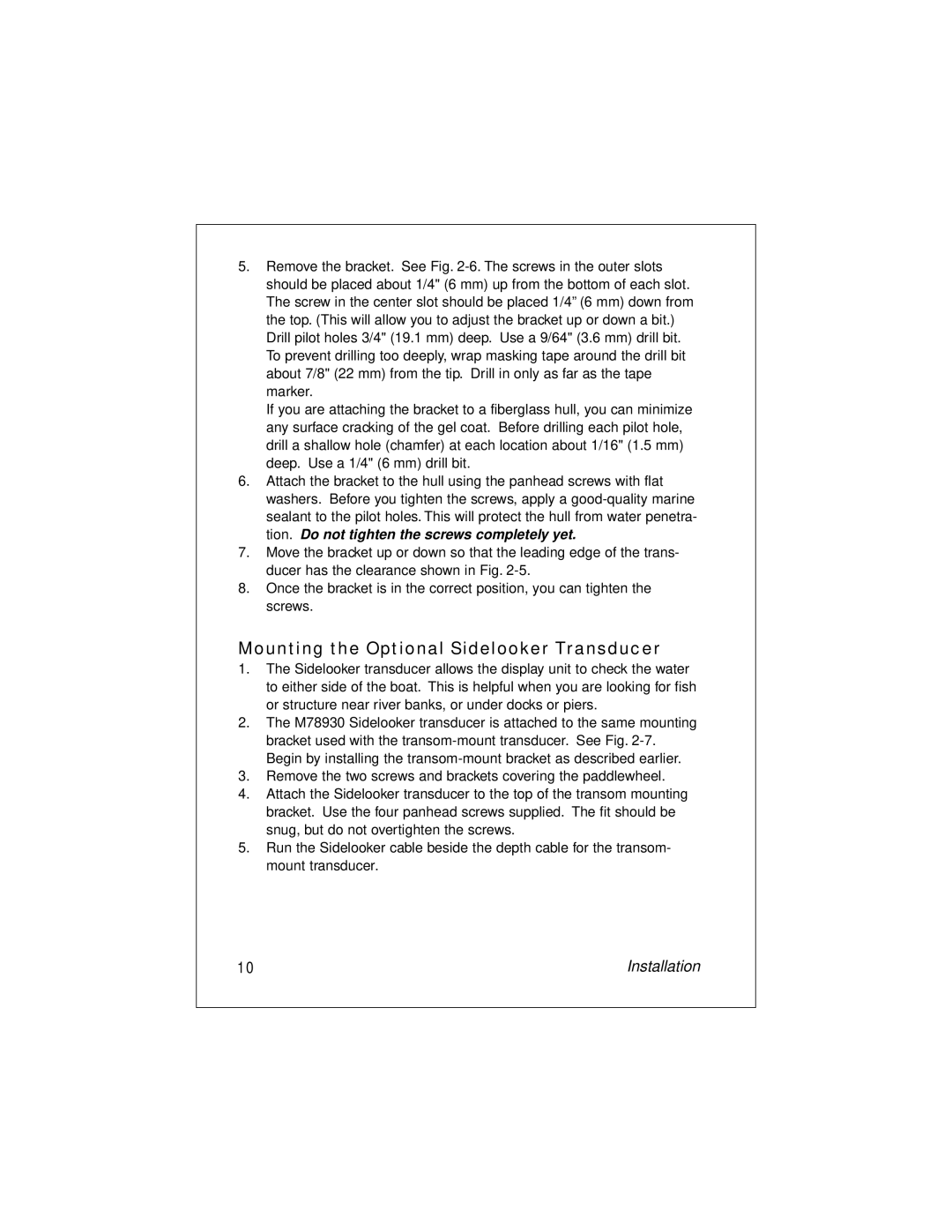L265 specifications
The Raymarine L265 is a cutting-edge piece of marine technology designed specifically for navigation and communication on the water. This integrated system combines advanced features and technologies, ensuring that boaters have the best tools available for safety and efficiency.One of the standout characteristics of the Raymarine L265 is its high-resolution display. The system typically incorporates a bright, sunlight-readable screen that provides exceptional visibility in all lighting conditions. The intuitive interface allows users to easily access various functions, making navigation more comfortable and streamlined.
At the heart of the L265's functionality is its award-winning Raymarine navigation software. This software offers a range of features including advanced chart plotting, waypoint management, and the ability to overlay additional information such as weather data and radar images. Users can benefit from detailed charts and maps, ensuring they can navigate through even the most challenging waters with confidence.
The L265 also boasts built-in GPS capabilities that provide accurate positioning information. The multi-channel GPS receiver ensures rapid satellite acquisition and consistent performance, even in areas with limited visibility. This reliability is crucial for safe navigation at sea.
In addition to its navigational prowess, the L265 incorporates sophisticated communication technologies. This system is compatible with various marine communication protocols, allowing boaters to connect with other devices on board, such as VHF radios and AIS transponders. This feature enhances situational awareness, giving users the ability to monitor vessel traffic and communicate effectively with nearby boats.
Safety is paramount in any marine setting, and the Raymarine L265 reinforces this with its integrated alarm systems. Users will receive alerts for a variety of conditions, such as low battery levels and navigational hazards. This level of vigilance can be vital in ensuring safe travels.
Furthermore, the Raymarine L265 often features expandable options, allowing users to integrate additional sensors and devices tailored to their specific needs. This means as technology advances or user demands change, the L265 can adapt, providing longevity and versatility.
In summary, the Raymarine L265 is an exemplary navigation and communication system, merging high-resolution displays, advanced software, dependable GPS, and comprehensive communication capabilities. With a focus on safety, adaptability, and user-friendly design, it stands out as an essential tool for any serious boater looking to enhance their maritime adventures.

